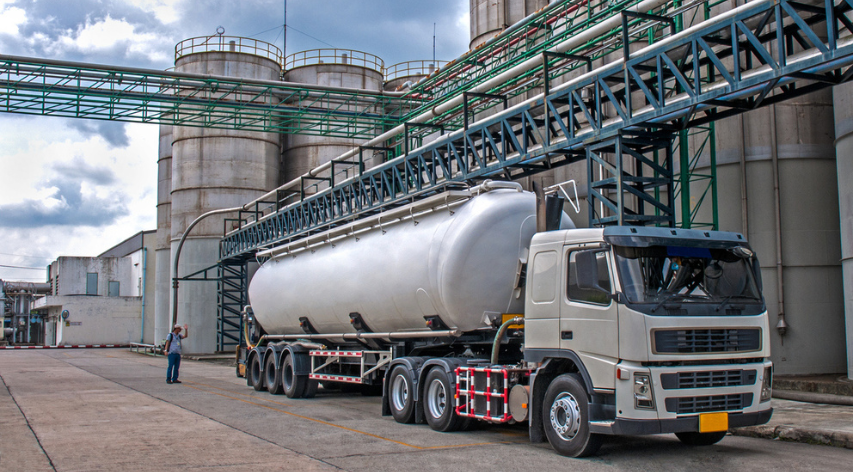Simple Fixes to Improve Energy Performance in Complex Plants

In a previous blog (Pinch Design in Practice), I discussed some of the basic design flaws and operating errors that can result in suboptimal energy performance. One of the main reasons these things happen is that both design and operation in the process industries are highly complex. I had my first insights into this phenomenon the first time I set foot in an oil refinery, as a member of a group of young chemical engineering students. My jaw almost hit the ground as I looked around. It wasn’t just the size of the facility. Pipes seemed to go everywhere, huge towers and stacks loomed above my head, and steam leaks hissed and sputtered around us.
“How can anyone ever get their head around all of this?” I mumbled, in awe and dread.
Our guide, who happened to be nearby, smiled benevolently. “No one can. Of course, everyone gets to know parts of it well; but no one knows the whole thing.”
His was right, of course, but my formal education had blinded me to the reality that he described. I had been spending my time and effort mastering concepts and methods in order to pass tests. In my naivety, I assumed that the rest of life must be the same. The refinery manager must be the person who had passed all the tests and understood it all. Since then, I have met a few refinery managers (no names…) and they definitely do not meet these criteria. My guide was right: No one can know it all.
High levels of complexity create many opportunities for error, and the errors can easily remain hidden under a mass of concrete, steel, and organizational detail. However, the errors themselves often are incredibly simple, as the following two examples illustrate.
An Unnecessary Cooling Water Shortage
Cooling water circuits are an important part of most process plants. They provide a way to control temperature and a mechanism for removing surplus heat. A cooling system that can’t satisfy the needs of the process can cause a multitude of operating problems.
There was a major debottlenecking project at a large chemical plant. However, when the plant restarted and production was increased to take advantage of the new design capacity, the site began experiencing a shortage of cooling water. This created bottlenecks that limited output and increased energy intensity; so, management initiated a project to add a cooling tower and upgrade the cooling water pumps.
A colleague of mine was a member of the project team, and he suspected something important had been missed. Before selecting any new equipment, he carried out a hydraulic survey of the existing cooling water system. His study yielded a surprising result. There was an unexpectedly large cooling water flow in one specific area of the facility where a section of the plant had been decommissioned during the revamp.
Based on this finding, a detailed examination was carried out in that area. All of the equipment had been left in place when the area was decommissioned, and all streams into and out of the area should have been isolated. However, the main valve for the cooling water had been overlooked and was left open. After my colleague identified this, the valve was closed, eliminating a large, unmetered cooling water flow. The simple act of closing the valve resolved the cooling water shortage and allowed the plant to reach full operating capacity, which significantly increased both production and profitability. This was accomplished without any new equipment or further upgrades, thus avoiding hundreds of thousands of dollars in new investment costs – just by closing a valve.
When Cleaning Your Heat Exchanger Isn’t Enough
Heat recovery systems are also very important in many process plants. Some of the most complex are the crude unit preheat trains found in oil refineries. Many of the heat exchangers in these trains are prone to fouling, and cleaning programs are critical for maintaining heat recovery duties. Refinery management has become very sophisticated in this area. Cleaning techniques are improving, and software tools are available for assessing appropriate cleaning intervals for the heat exchangers in preheat trains. However, in a large, busy, complex oil refinery, things can and do go wrong.
During a crude preheat train energy assessment in a large oil refinery, I noticed that one of the heat exchangers was out of service. I asked one of the operators about this, and he told me the equipment in question was a “bad actor.” His wording seemed rather vague, but it is not unusual for heat exchangers to require maintenance. However, my curiosity had been piqued. I was able to find the maintenances records, and they showed that this particular heat exchanger had been idle for more than three months. Further investigation revealed it had been cleaned. That was the last entry in the log. There was no indication of why it had not been put back in service.
I was now in full sleuth mode, and I started asking more questions. What I learned was the following: The cleaning had indeed been carried out. When the job was complete, the maintenance supervisor asked the shift supervisor to put the heat exchanger back in service. However, this handover took place as the shift was ending, and the heat exchanger could not be put back in service until the next shift started. Unfortunately, the shift supervisor failed to pass the information on to the next shift…and a nicely cleaned heat exchanger remained out of service for three months, until I happened to stumble upon it and started asking questions.
I explained the situation to the unit manager, and he talked to the shift supervisor. I did not hear that conversation, but if I had, I doubt I would be allowed to publish it. What I can tell you is that within a few hours the heat exchanger was back in service. The energy wastage during the three months the heat exchanger had been idle was worth over $100,000 – not huge in the context of a large oil refinery, but an unnecessary expense that could have been mitigated by a cheap and easy fix. It had been overlooked because it was sitting in the middle of a busy and highly complex manufacturing facility.
Summing It Up
Both examples highlight a breakdown in communication that thwarted the completion of what should have been simple task. As discussed in my most recent blog (Energy Savings Hidden in Plain Sight), this is a very common phenomenon – even in the era of electronic logging and tracking systems. Yet simple oversights like this continue to occur, and a major cause is the complexity of both the design and the operation of our oil refineries and chemical plants.
In the first example, the multitude of pipes, pumps, and valves made it hard to recognize that one critical valve still needed to be closed during decommissioning. The problem was identified by some rigorous hydraulic modeling, and after that the fix was very simple: close the valve.
In the second example, it was not just the complexity of the plant, but also the constant stream of activity and interruptions that derailed the routine task of putting a heat exchanger back in service. The problem was identified without any rigorous technical evaluation, simply by noting that the equipment was idle and then asking the obvious question: Why? Once that question had been answered, the heat exchanger was readily put back in service.
If you work in a refinery or plant, there may be similar opportunities just waiting to be found in the midst of the complexity right outside your door. Why not open that door and look for a few of them?
Reference
Rossiter, A. P., “Back to the Basics,” Hydrocarbon Engineering, Vol. 12, No. 9, pp. 69-73, September 2007
Like what you just read? Join our email list for more expert insights and industry updates.






